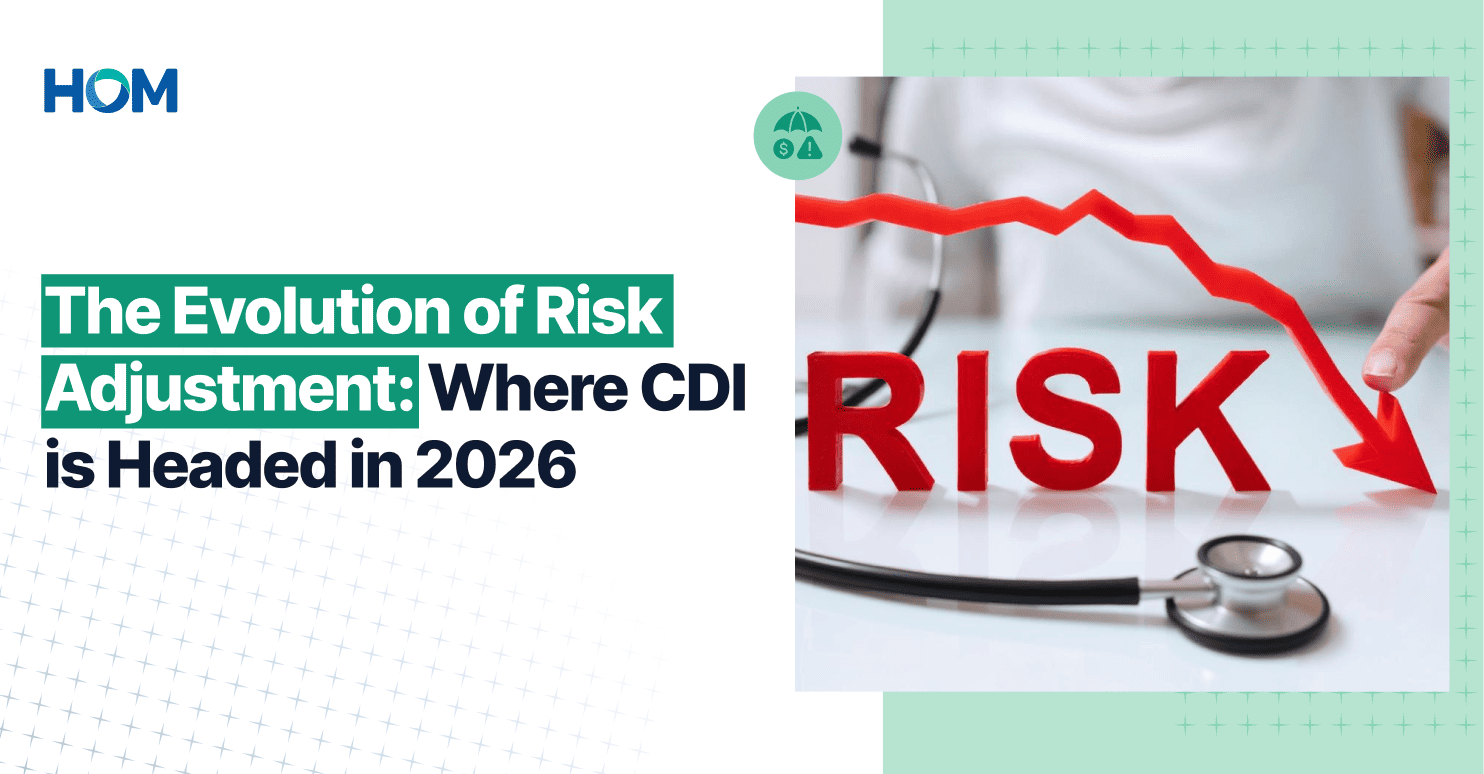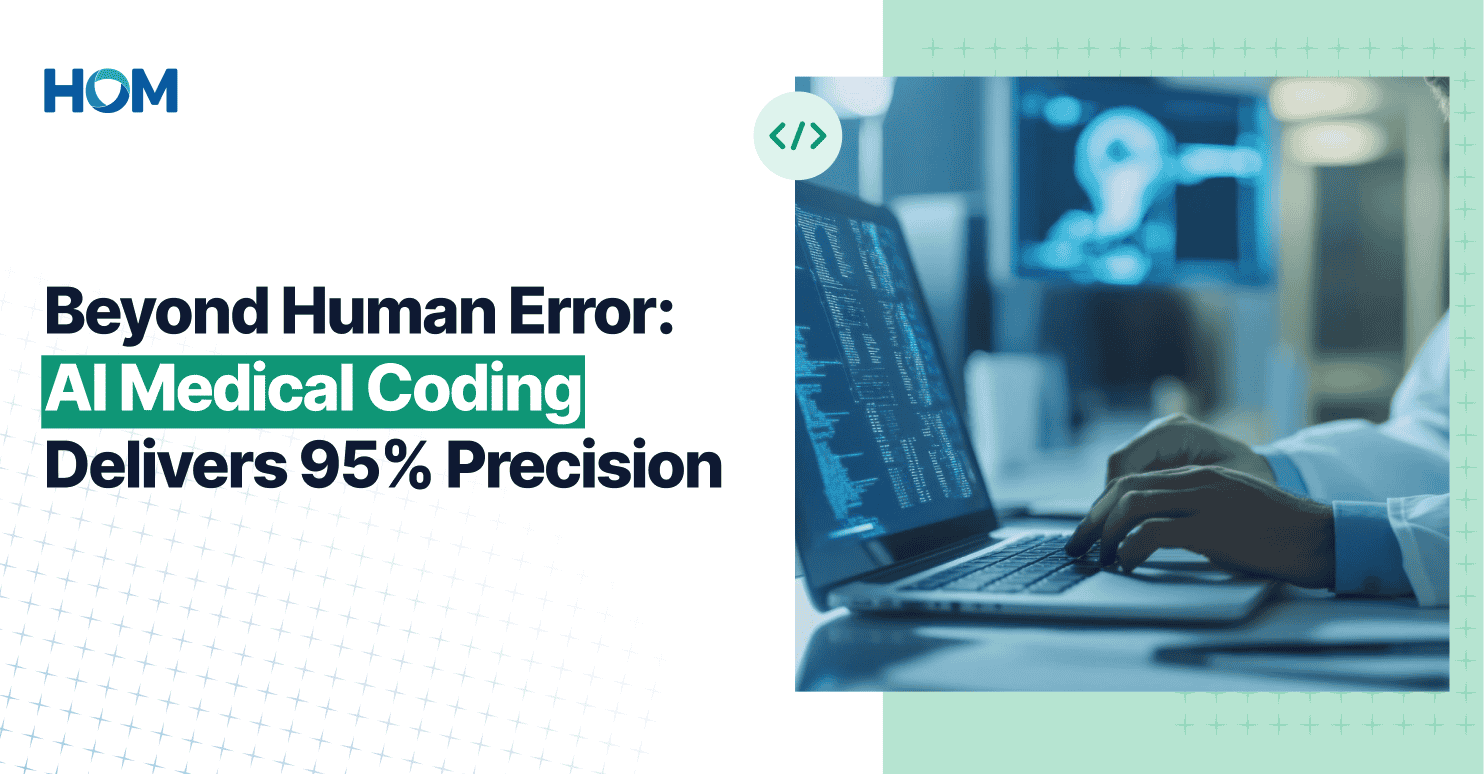
Here's the truth about Clinical Documentation Improvement: a few years ago, CDI was straightforward. Review charts, find missed diagnoses, educate providers, and repeat. A 15-20% RAF score boost was considered excellent work.
But currently, organizations implementing comprehensive CDI programs are achieving RAF score improvements of 40% or more, with enhanced documentation accuracy that supports both appropriate reimbursement and regulatory compliance.
Here's what should really get healthcare leaders excited: this is just the beginning.
The CDI landscape isn't just evolving anymore; it's transforming at breakneck speed. Organizations that aren't paying attention to where things are headed by 2026 are going to be left behind.
Why CDI Teams Are Strained and How Some Are Thriving
Walk into most healthcare organizations today, and you'll find CDI teams buried under overwhelming chart volumes. They're doing incredible work, but they're drowning.
A recent engagement with a large Florida physician group revealed CDI specialists reviewing charts from two years ago because they couldn't keep up with the current volume. Meanwhile, providers were getting frustrated because they couldn't see the immediate connection between their documentation and patient care outcomes.
The V28 model rollout threw another curveball into the mix. Suddenly, conditions that captured risk under V24 weren't pulling the same weight. Organizations scrambled to retrain teams, update processes, and figure out how to maintain RAF scores with completely different rules.
But here's what's interesting: organizations that adapted quickly to V28 didn't just survive the transition; they thrived. They used it as an opportunity to completely rethink their approach to CDI. That's exactly the mindset needed for what's coming next.
What's Emerging: 5 Game-Changing Trends in CDI
Here are the major anticipated trends in CDI that healthcare providers must note:
1. The Automation Revolution (And Why It's Not What You Think)
Everyone talks about automation like it's going to replace CDI specialists. That's not what's happening at all. The smartest organizations are using technology to make their CDI teams superhuman, not redundant.
Early adopters are implementing systems that can scan through hundreds of charts in the time it takes a human to review a handful. But here's the key: these systems aren't making coding decisions. They're flagging opportunities and prioritizing cases so CDI specialists can focus on what they do best—clinical insight and provider education.
A CDI team can transition from reviewing 50 charts per week to effectively analyzing 200, as automation handles the initial screening. Quality will not likely suffer; it will improve because specialists can spend more time on complex cases instead of searching for obvious HCC opportunities.
The real breakthrough isn't just in finding missed diagnoses. It's in pattern recognition across entire populations. When organizations can identify that 80% of their diabetic patients aren't having complications properly documented, they can design targeted education programs that move the needle.
2. Provider Engagement Gets Personal
Remember when provider education meant quarterly newsletters and lunch-and-learns that half the doctors skipped? Those days are numbered.
Organizations winning at CDI have figured out something crucial: physicians respond to feedback that's immediate, specific, and tied to their patients. Generic training doesn't work.
What works is showing Dr. Smith that when she documented Mrs. Johnson's diabetes more completely last month, it enabled better care coordination and appropriate resource allocation.
Leading CDI programs are developing individualized dashboards for each provider that track documentation improvement over time, in a supportive coaching approach.
The gamification trend is real, too, but it has to be done right. Recognition programs that celebrate improvement rather than just volume are creating healthy competition.
Physician groups where doctors started asking each other for documentation tips because everyone wanted to be featured in monthly success stories are also becoming common.
3. Predictive Analytics: The Crystal Ball Effect
This trend represents a fundamental shift from reactive to proactive CDI. Instead of waiting for patients to show up and then figuring out what was missed, organizations are starting to predict which patients are likely to have undocumented conditions.
One health plan could leverage predictive modeling to pinpoint members statistically likely to have chronic kidney disease, based on their existing conditions and lab results, but who lacked formal documentation. By initiating targeted outreach campaigns, the plan could enhance RAF scores and proactively identify patients needing improved nephrology care.
This isn't just about coding; it's about population health management. When organizations can predict which patients are likely to have care gaps, they can be proactive about addressing them. Documentation accuracy becomes a byproduct of better care coordination.
4. Compliance: The Bar Keeps Rising
Let's address something that keeps CDI directors up at night: audits. CMS isn't becoming lenient; it’s becoming sophisticated. Audit methodologies are evolving, and organizations need to be ready.
The most successful CDI programs have built audit readiness into their everyday processes. They're not just reviewing charts for coding opportunities; they're creating documentation trails that demonstrate medical necessity and appropriate care. Every CDI intervention gets tracked, every provider education effort gets documented, and every quality improvement initiative becomes measurable.
5. CDI Meets Quality: The Convergence
Here's a trend that will define the next phase of CDI evolution: integration with quality reporting and care management. HEDIS measures, Stars ratings, value-based care contracts—they're all starting to converge around the same core issue: comprehensive, accurate documentation.
Smart organizations are realizing that the same documentation improvements that boost RAF scores also support quality measure reporting. When diabetic complications get documented accurately, organizations aren't just capturing risk; they're also supporting appropriate care protocols and quality initiatives.
The Implementation Reality: It's Harder Than It Looks
Let's be realistic about implementation challenges. Too many organizations get excited about new CDI approaches and then stumble on execution.
The biggest challenge isn't technical; it's cultural. Healthcare providers are naturally skeptical of new requirements, especially when they don't see the immediate connection to patient care. Organizations that succeed at CDI transformation are the ones that invest heavily in change management and provider engagement from day one.
You can't just roll out new processes and expect adoption. Organizations need champions within the provider community who understand the value and can help their colleagues see the connection between better documentation and better patient outcomes.
Technology integration is another common stumbling block. Healthcare IT environments are complex, and any new CDI solution needs to work seamlessly with existing workflows. Smart organizations prioritize vendor partners who understand healthcare operations, not just healthcare coding.
Getting Ready for 2026: Practical Recommendations
Based on industry trends, here's what organizations should do to stay ahead of the curve:
- Audit Capabilities: Honestly assess current CDI processes to identify bottlenecks, strengths, and provider pain points. Improvement starts with clarity.
- Expand Objectives: Shift the focus beyond coding accuracy. Successful 2026 CDI programs will align documentation improvement with broader goals, such as quality scores, patient satisfaction, and care coordination.
- Invest in People: Adapt to the evolving role of CDI specialists. Provide training in emerging technologies, strategic thinking, and effective provider communication.
- Select Technology Partners Thoughtfully: Choose vendors who view CDI comprehensively, not just as a tool for finding missed diagnoses, but as integral support for the entire documentation improvement strategy.
Takeaway
The future of CDI looks more promising than ever. We're moving toward a world where documentation improvement supports better patient care, more accurate reimbursement, and stronger healthcare outcomes across the board.
Organizations that will lead this transformation are the ones starting to prepare now. They're investing in technology, developing their teams, and building CDI programs that are strategic rather than just tactical.
HOM has been helping healthcare providers, health systems, and payers navigate the evolving CDI landscape while delivering measurable results.
Our comprehensive Clinical Documentation Improvement services have generated 40% RAF score increases for clients and maintained 98% accuracy rates across thousands of chart reviews.
As a trusted revenue cycle management partner, HOM combines deep clinical expertise with innovative approaches to help organizations optimize their documentation processes, improve compliance, and enhance financial performance.
Ready to position your organization for CDI success in 2026? Contact HOM today.
Bring a change to your Healthcare Operations
A partnership with HOM gives you an inherent:
Connect with our experts for a quick analysis and possibilities.

_July%208%2C%202025.png)













